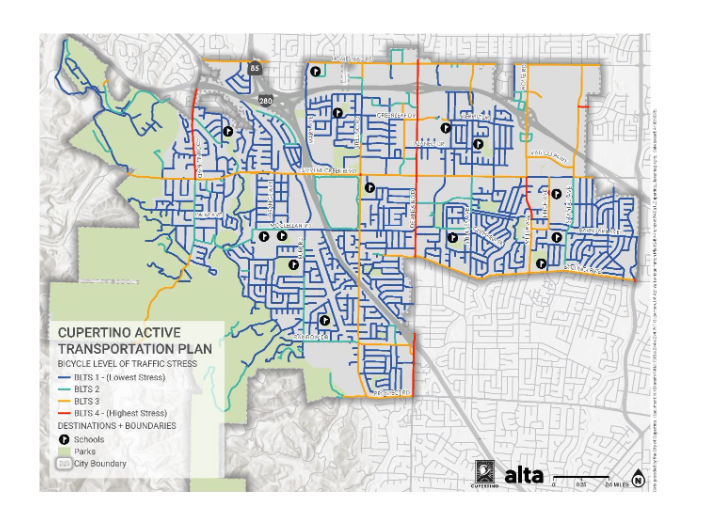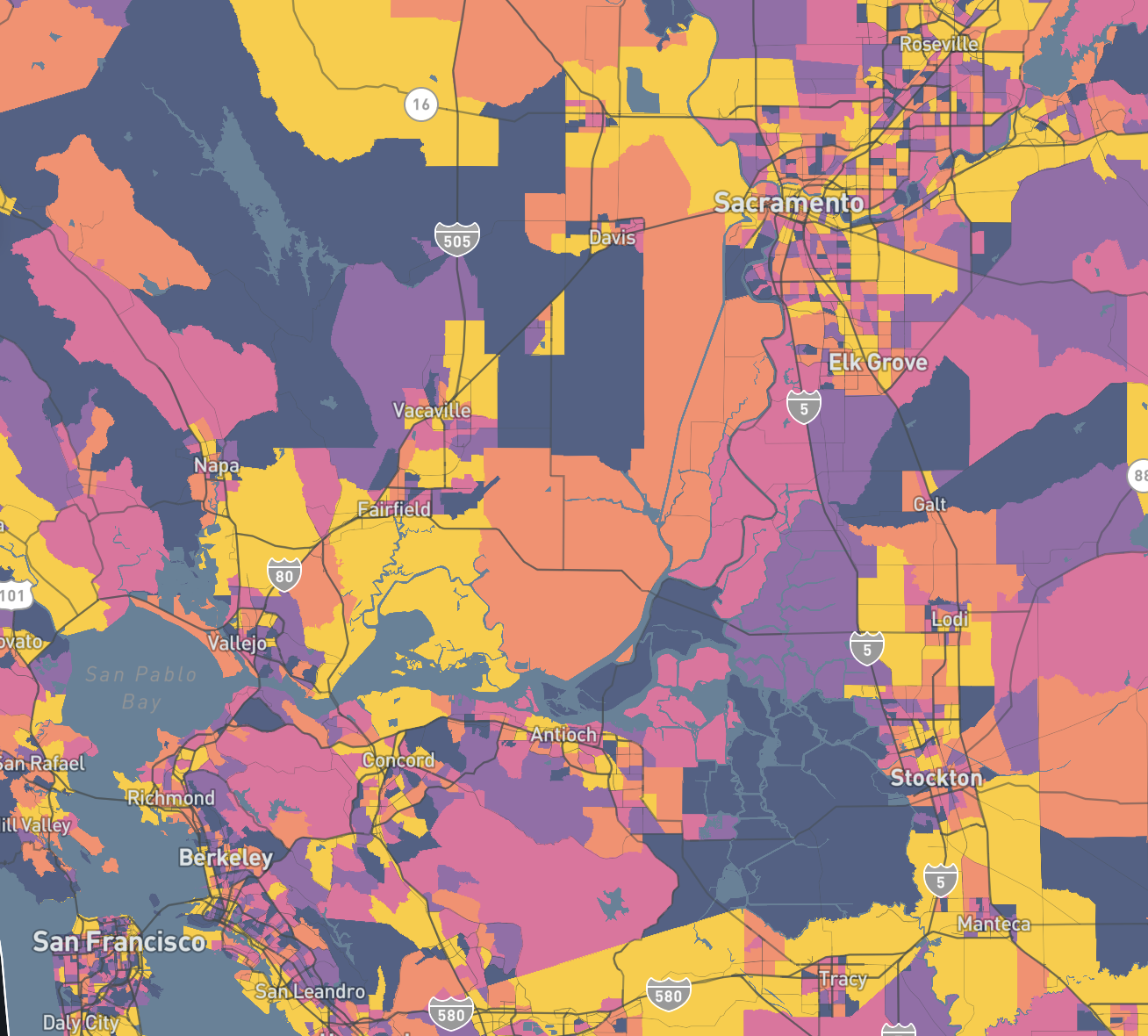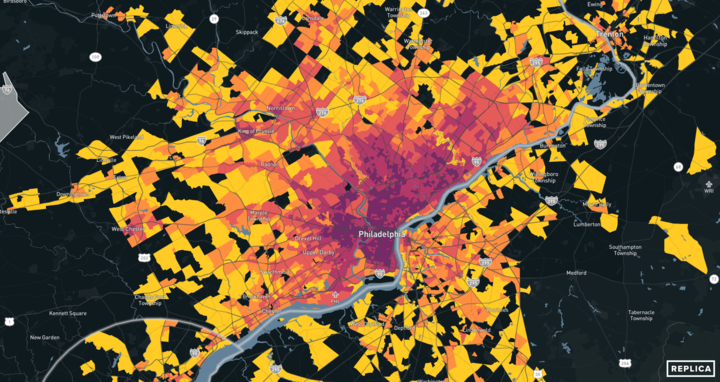This year, the federal government established its first-ever program dedicated to reconnecting communities that were severed by the construction of highways and other infrastructure. The Reconnecting Communities Pilot, created through the Bipartisan Infrastructure Law, represents a modest but meaningful first step in correcting the harms of past planning decisions.
To effectively restore community connectivity, it’s essential to identify the people who are most affected by existing conditions and how to meet their needs today. Replica data offers the only nationwide model that can serve to identify and quantify the most disconnected communities, as well as opportunities to begin to mitigate and address these transportation burdens.
To demonstrate this capability, we looked at Dallas, Texas, where a convergence of Interstate highways forms a ring around the central business district.
With Replica, we can quickly identify where residents are disproportionately affected by this barrier. We can also get a sense of what would be a favorable outcome, for instance improving work commutes through better active mobility connections.

First, we identified the top tenth percentile of census block groups with the longest work commute times in Dallas. Seven of them were within a ten-minute walk (a half-mile) of the Downtown CBD.
Work commutes for residents of these block groups were more than twice as long, on average, as the walking distance. Of all work commutes originating in these block groups, 8 percent are walking trips, but for the trips that ended in the Downtown CBD, only 3 percent are done on foot, despite the proximity to these work destinations.
We then looked at how these trips were being conducted in private automobiles to try to understand why these commutes weren’t conducted by foot.

Mapping the top origin-destination pairs for these work trips from the seven block groups identified into the six block groups that constitute the CBD shows us that several of the top O-D pairs are adjacent or one block group away.
When we include network link volumes, we can see how some of the highest volumes for work trips in automobiles are for very short-distance trips that happen across interstates; an indication of why commuters might be avoiding walking to work.
These insights can help us identify where active mode investments would support these disconnected communities most in these short-duration work commutes across the highway. One such location, Ross Avenue at Interstate 345, showed some of the highest volumes of trips and has the opportunity to serve as a reconnection to downtown jobs via active modes.
As part of the analysis, we also looked at lower-income residents of Dallas who don’t have access to an automobile and who experience long trips for shopping. It comes as no surprise that one of the block groups that represents some of the highest such trips is bisected by a highway. This block group can be prioritized for investment to help those most in need to reach food and other essential shopping.

To learn more about our analysis and to hear what USDOT and others have to say about Reconnecting Communities, view the recording of our Reconnecting Communities webinar here.








